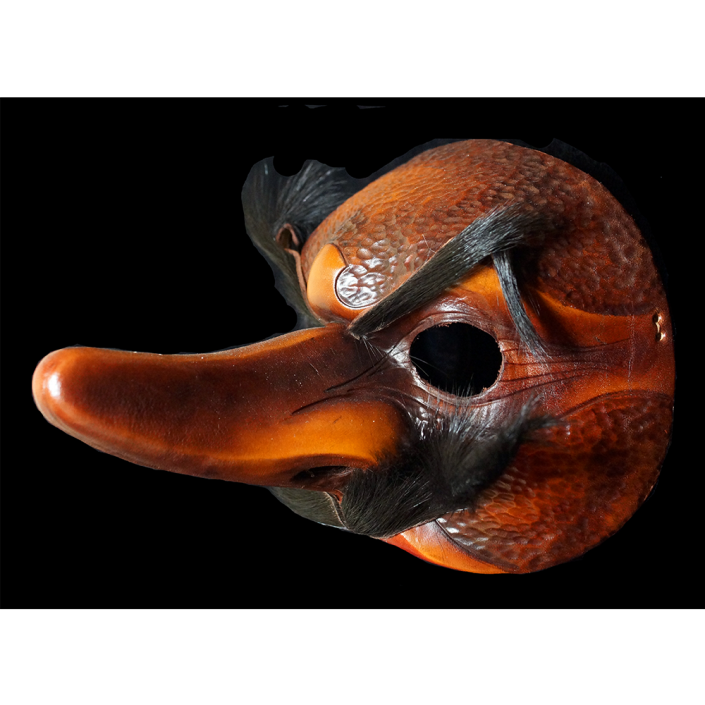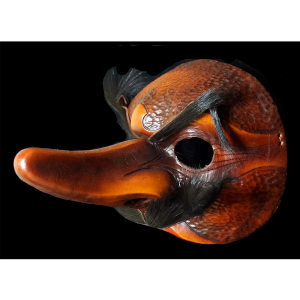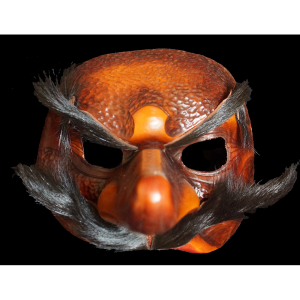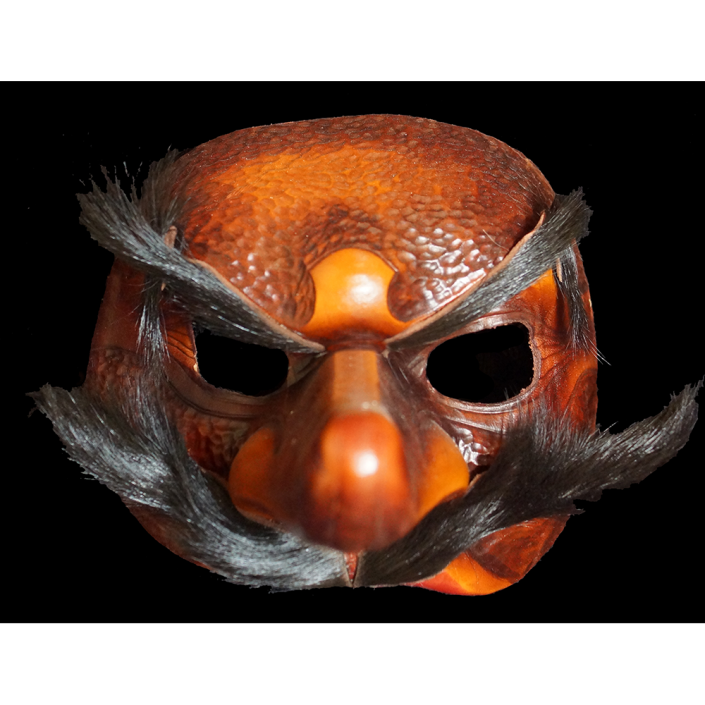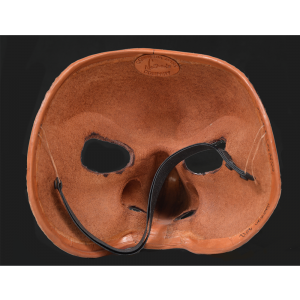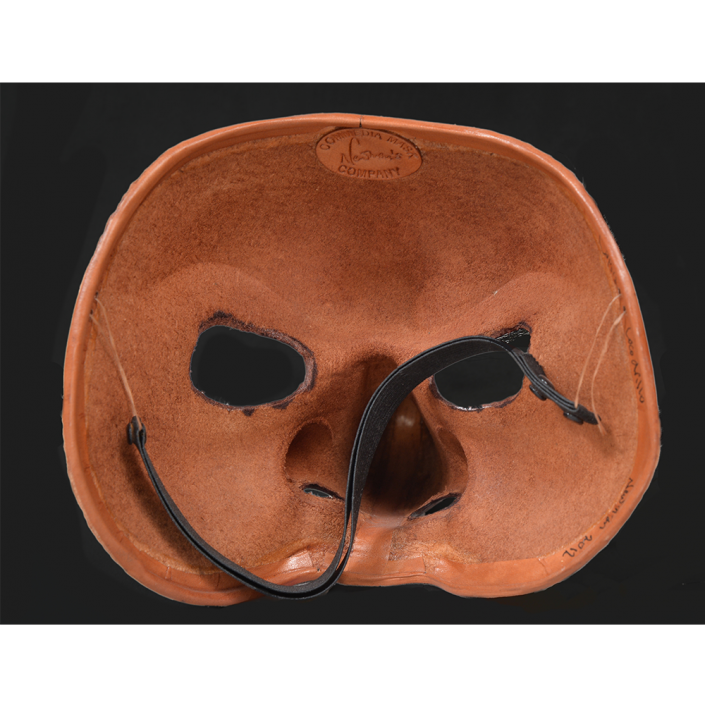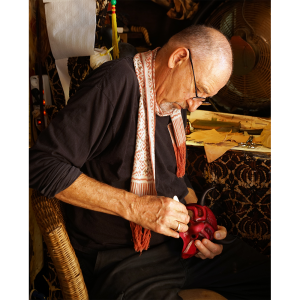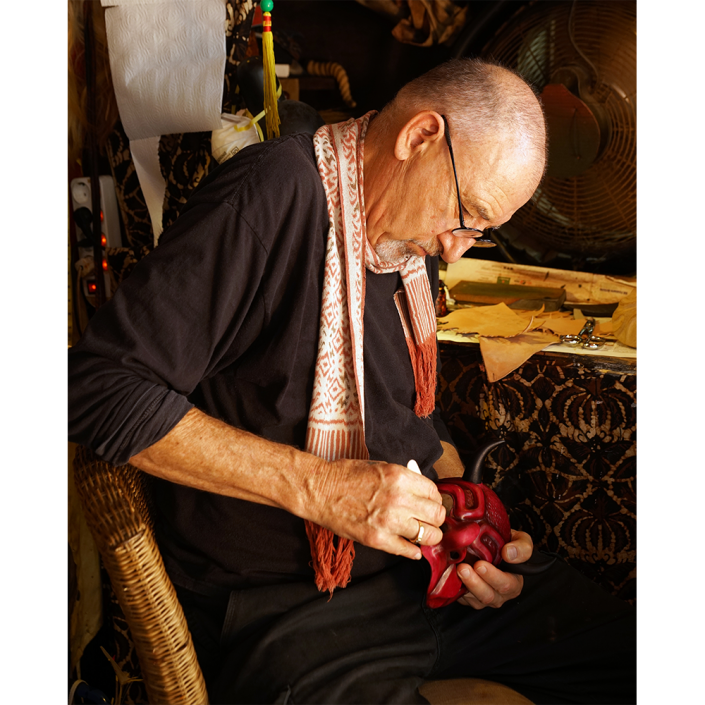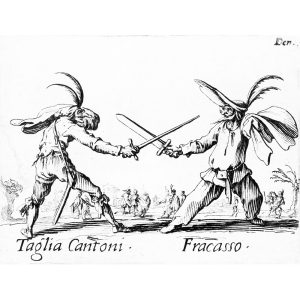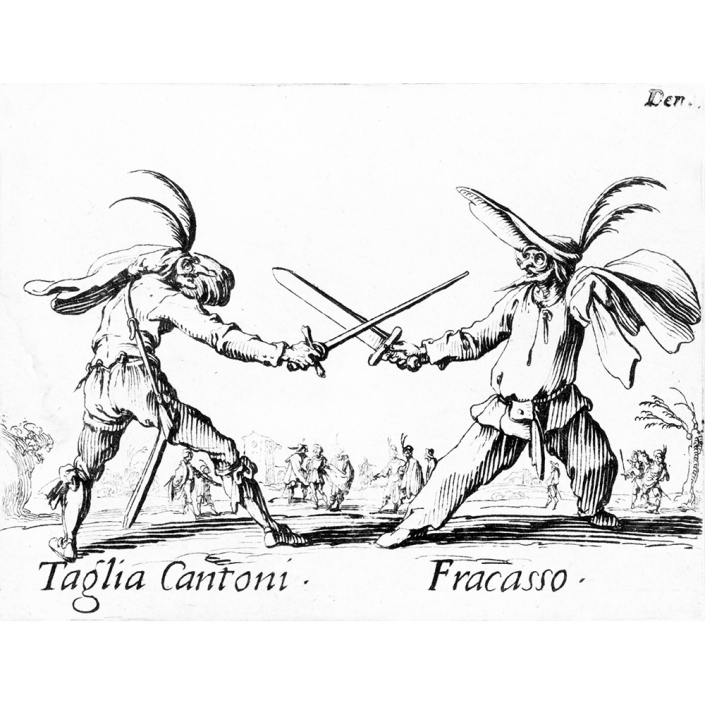TITLE: Commedia dell’Arte Capitano
TYPE: face mask
GENERAL REGION: Europe
COUNTRY: Italy
ETHNICITY: Italian
DESCRIPTION: Capitano Cocodrillo (Captain Crocodile) mask
CATALOG ID: EUIT003
MAKER: Alan G. Newman (London, England, 1951- )
CEREMONY: Commedia dell’Arte; Carnival
AGE: 2012
MAIN MATERIAL: leather
OTHER MATERIALS: pigment; goat hair; elastic strap
The Commedia dell’Arte was a form of public entertainment that succeeded the classical Roman theater in Italy. Like classical theater, Commedia performers wore leather masks to represent stock characters and often performed in amphitheaters to large audiences. However, the Commedia differed in having only a very basic plot sketch, with most of the lines invented extemporaneously by the actors. The Commedia‘s ability to stay topical and its frequent resort to vulgar humor, combined with the considerable talent of Italian troupes that traveled throughout Europe, made this form of theater extremely popular throughout the early 17th to late 19th centuries. Masked actors had to compensate for their inability to convey facial emotion through posture, gesture, and vocal nuance.
The Capitani were long among the most popular stock characters of the Commedia. Different acting troupes used different captains. They all had comical or evocative names, such as Spavento della Valle Inferna (Captain Fear of Hell’s Valley), Matamoros (Captain Moor-Killer), or Sangue y Fuego (Captain Blood-and-Fire). The captain masks were originally flesh-colored, with a menacing nose to represent a bullying personality.
This specific Capitano represents Cocodrillo (Crocodile) and comes from classically trained mask maker Alan G. Newman.
To learn more about Commedia dell’Arte, see Pierre Louis Duchartre, The Italian Comedy (Dover Pubs., 1966).
